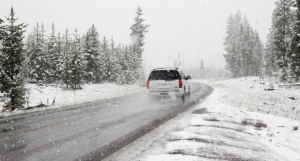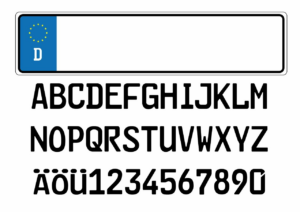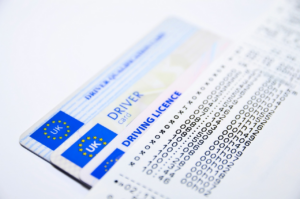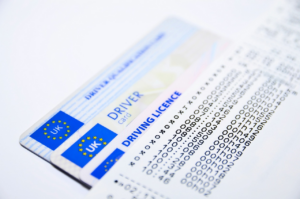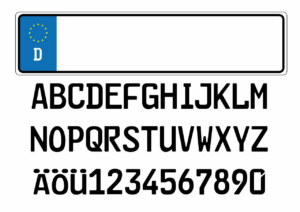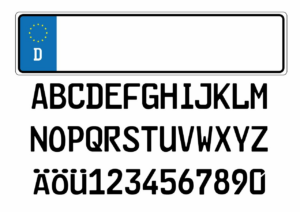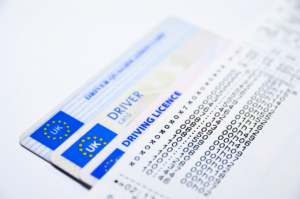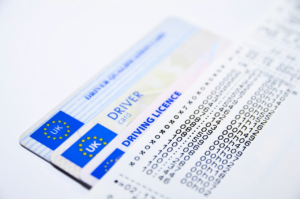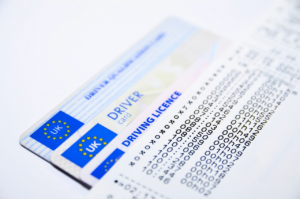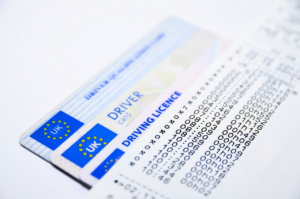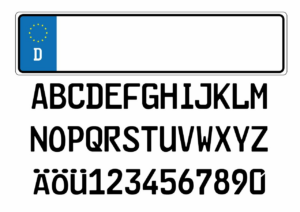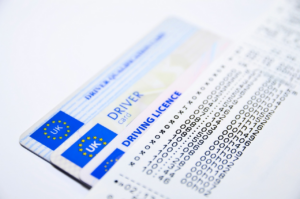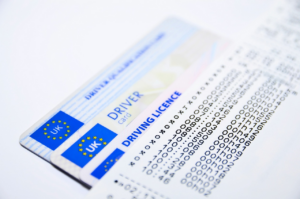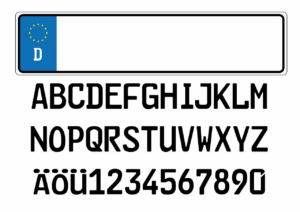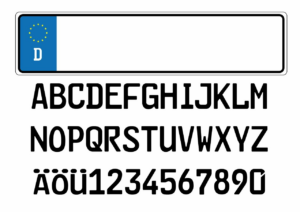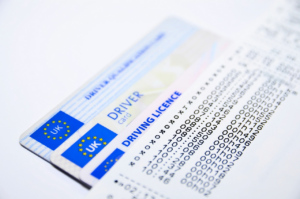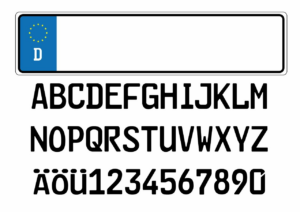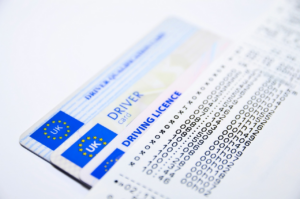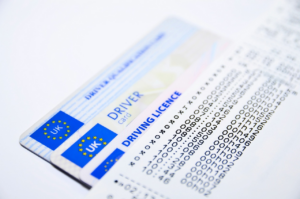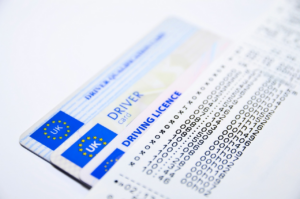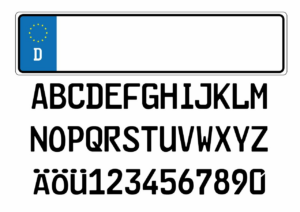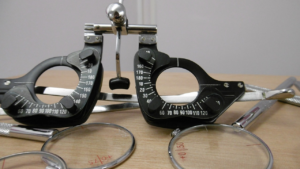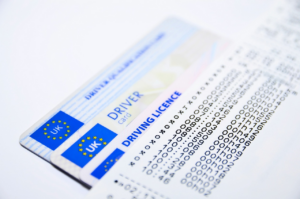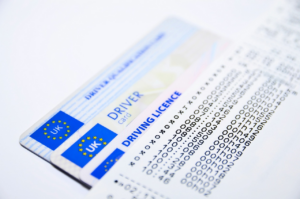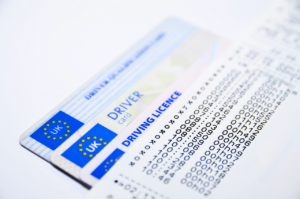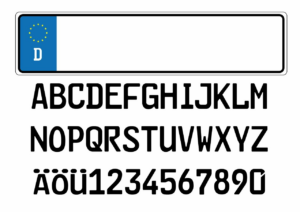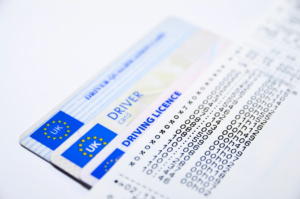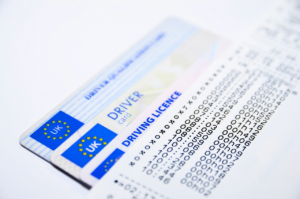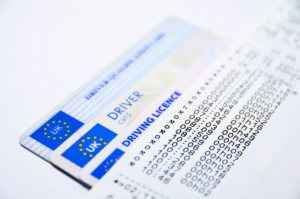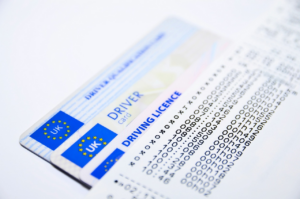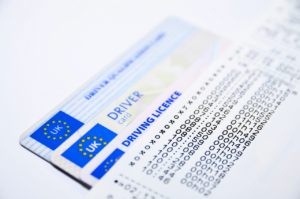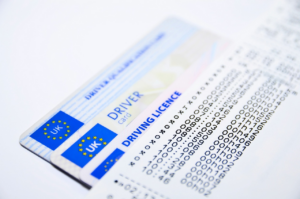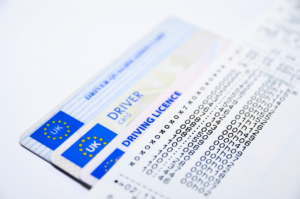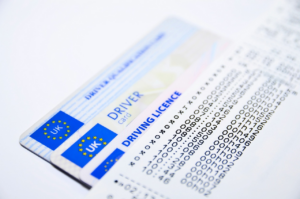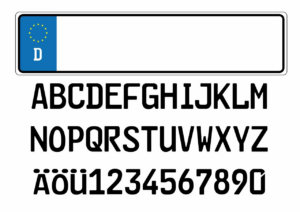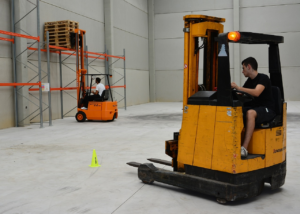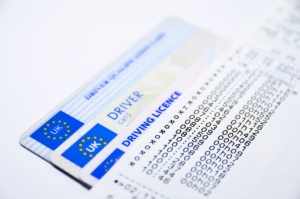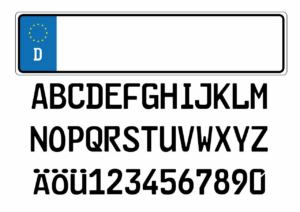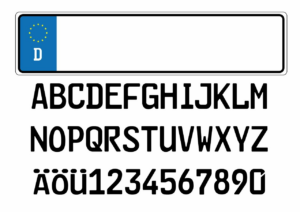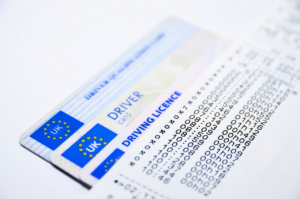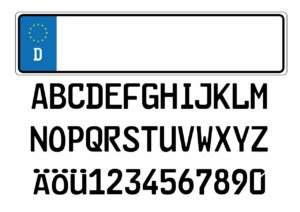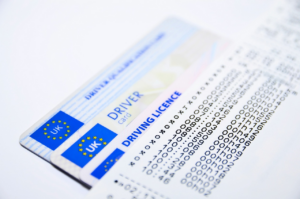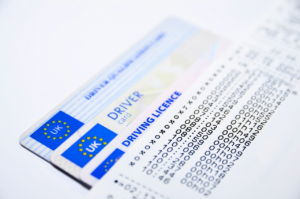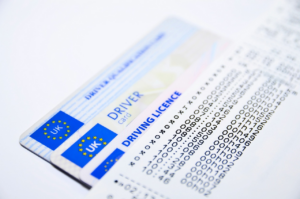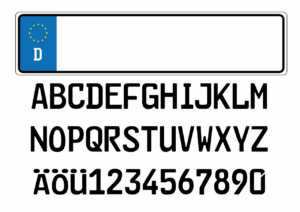Are you planning to hit the road anytime soon? Before you do, it’s important to check the weather reports to determine if you’ll be driving in windy conditions. Strong gusts of wind can make driving challenging and even dangerous, especially for high-profile vehicles such as RVs, trucks, and buses.
However, with some preparation and caution, you can navigate through the wind with ease. In this article, we’ll provide you with seven tips and tricks for driving in windy conditions, so you can arrive at your destination safely and with minimal stress.
The first tip is to ensure that your vehicle is in good condition before hitting the road. This includes checking the tires, brakes, and suspension to ensure they are functioning properly. Additionally, it’s important to adjust your driving style and stay alert and focused, especially when driving through open areas, such as highways or bridges.
Using your headlights and being prepared for crosswinds are also critical to staying safe on the road during windy conditions. Lastly, taking breaks when necessary and seeking shelter during extreme winds are two other important tips to keep in mind.
Keep reading to learn more about these tips and tricks for driving in windy conditions.
Check Weather Reports Before Driving
Before you hit the road, make sure to check the weather reports to ensure a safe and smooth journey. Windy conditions can make driving challenging and even hazardous, especially for high-profile vehicles such as trucks and SUVs.
By checking the weather reports, you can prepare yourself for what lies ahead and adjust your driving accordingly. When checking the weather reports, pay attention to the wind speed and direction. This will give you an idea of how strong the wind will be and from which direction it will be blowing.
Additionally, check for any weather alerts or warnings related to high winds. This information will help you decide whether to postpone your trip or take a different route. Remember, it’s always better to be safe than sorry. So, make sure to check the weather reports before hitting the road.
Ensure Your Vehicle is in Good Condition
Make sure your ride is in top shape, as a well-maintained vehicle can handle the challenges of strong winds more efficiently. Before hitting the road, check your car’s fluids, brakes, tires, and windshield wipers.
Ensure that your tires are properly inflated and have enough tread depth to provide good traction on wet or slippery roads. Worn-out tires can cause your ride to slide or skid when you hit a gust of wind.
If you notice any issues with your vehicle, such as unusual noises, vibrations, or warning lights, get them fixed before driving in windy conditions. A malfunctioning part can compromise your car’s stability and make it more difficult to control in high winds.
Also, make sure your car is not overloaded with heavy cargo or passengers, as this can affect its balance and handling. By taking the time to maintain your car, you can reduce the risk of accidents and make your trip more comfortable and enjoyable.
Adjust Your Driving Style
To handle strong winds, adjust your driving style and stay alert while on the road. Start by reducing your speed and keeping a firm grip on the steering wheel. Wind gusts can easily push your vehicle off course, so it’s important to maintain control.
Keep both hands on the wheel, and avoid any sudden movements or corrections. Instead, make small adjustments to keep your vehicle centered in your lane.
Another important adjustment to make is to increase your following distance. Strong winds can cause sudden stops or movements from other vehicles, so it’s crucial to give yourself plenty of time to react. Experts recommend increasing your following distance by at least double in windy conditions. This will give you more time to brake or swerve if necessary.
By adjusting your driving style and staying vigilant on the road, you can safely navigate even the windiest of conditions.
Stay Alert and Focused
When it comes to driving in windy conditions, it’s important to stay alert and focused. To ensure your safety and the safety of others on the road, you should avoid any distractions that may take your attention away from the task at hand.
Keep both hands on the steering wheel and be aware of other drivers around you. Remember, staying alert and focused is key to navigating windy roads with confidence.
Avoid Distractions
Stay focused and alert by minimizing distractions while navigating through strong gusts of wind. Driving in windy conditions requires your undivided attention as it can be unpredictable and dangerous.
Avoid using your phone or any electronic device that may take your eyes off the road. If you need to make a call or send a text, pull over to a safe spot and do it there.
Loud music or conversations with passengers can also be distracting, so keep the volume low and try to limit the number of people in the car. Remember that your safety and that of others on the road should always be your top priority.
Another common distraction while driving in windy conditions is food and drinks. Eating or drinking while driving can take your hands off the wheel and your focus away from the road. If you need to eat or drink, pull over to a safe spot and do it there.
Additionally, avoid smoking while driving, as lighting a cigarette or handling a lit one can be hazardous in high winds.
Lastly, keep your hands on the wheel and avoid fiddling with the radio or adjusting your seat while driving. These seemingly small actions can cause a momentary lapse in focus, which can be dangerous in windy conditions.
Keep Both Hands on the Steering Wheel
Keeping both hands on the steering wheel is crucial for maintaining control of your vehicle in gusty winds, ensuring the safety of yourself and other drivers on the road. When the winds are strong, they can push your car off course, making it difficult to steer and maintain your lane. By keeping both hands on the steering wheel, you can better feel the movement of your car and have a better grip on the wheel, giving you more control over your vehicle.
To further emphasize the importance of keeping both hands on the steering wheel while driving in windy conditions, here are some tips to keep in mind:
-
Avoid driving with one hand on the wheel, even if you think the wind isn’t that strong. It only takes one sudden gust to push your car off course.
-
Grip the wheel firmly, but not too tightly. Having a secure hold on the wheel will give you better control, but gripping it too tightly can cause fatigue and muscle tension.
-
Keep your arms relaxed and in a comfortable position. This’ll help you react quickly to any sudden changes in the wind.
-
Use your peripheral vision to monitor the position of your car in relation to the road. This’ll help you make quick adjustments to your steering if necessary.
-
Don’t overcorrect if your car starts to drift off course. Instead, gently steer the car back into your lane while maintaining a steady speed.
Watch Out for Other Drivers
Be aware of other drivers on the road during gusty winds and take extra precautions to ensure everyone’s safety. It’s important to keep a safe distance from other vehicles, especially larger ones like trucks and buses, as they may be affected more by the wind and could potentially swerve or lose control. Additionally, be on the lookout for drivers who may not be as cautious and could be driving recklessly. Stay alert and ready to react if necessary.
To help you stay safe on the road during windy conditions, use this table as a guide:
| Precautions to Take | Why it’s Important | How to Implement |
|---|---|---|
| Keep a safe distance from other vehicles | Larger vehicles may be affected more by wind and potentially swerve or lose control | Increase following distance and be prepared to brake quickly |
| Watch for debris on the road | High winds can blow objects onto the road, creating hazards for drivers | Scan ahead for potential obstacles and be prepared to swerve if necessary |
| Slow down | Wind can affect vehicle stability and handling, especially at higher speeds | Reduce speed and maintain a consistent pace to avoid sudden changes in direction or speed |
| Check weather and road conditions before driving | Knowing what to expect can help you plan your route and avoid areas with particularly dangerous conditions | Check local news and weather reports, as well as traffic updates |
| Stay alert and focused | Windy conditions require extra attention and awareness to stay safe | Keep your eyes on the road, avoid distractions, and be prepared to react quickly if necessary |
By following these precautions and staying aware of other drivers on the road, you can help ensure a safer driving experience during gusty winds.
Use Your Headlights
Make sure your headlights are on when it’s windy so other drivers can see you better. This is especially important during the day when it may not be obvious that your car is approaching. Turning your headlights on can also help to increase your own visibility, making it easier for you to see the road ahead.
To make the most out of your headlights, here are some tips to keep in mind:
- Keep your headlights clean and free of debris to ensure maximum visibility.
- Use your high beams when driving on deserted roads, but remember to switch to low beams when other cars are approaching.
- Avoid using your fog lights unless visibility is severely impaired, as they can be blinding to other drivers.
- If you’re driving in a convoy with other cars, make sure your headlights are aligned with the car in front of you, so that the driver can see you in their rearview mirror.
By following these tips, you can increase your visibility and reduce the risk of accidents when driving in windy conditions. Remember, the key to safe driving is to always be prepared and aware of your surroundings.
Be Prepared for Crosswinds
You don’t want to be caught off guard by unpredictable crosswinds, so take control of the situation and stay safe on the road.
Crosswinds can be especially dangerous for high-profile vehicles such as trucks, buses, and SUVs. These vehicles catch more wind, making them more prone to tipping over or swerving out of control.
To be prepared for crosswinds, make sure your vehicle is in good condition, including your tires, brakes, and suspension. Reduce your speed and maintain a firm grip on the steering wheel, keeping both hands in the 9 and 3 o’clock positions.
If you do feel your vehicle being pushed to the side, resist the urge to overcorrect. Instead, gradually steer back into your lane and maintain a safe speed until the wind subsides.
Be aware of your surroundings and the behavior of other vehicles on the road, and always wear your seatbelt for added safety.
Take Breaks When Necessary
Don’t forget to take breaks when needed, as fatigue can affect your driving ability and increase the risk of accidents.
Windy conditions can be especially tiring, as you constantly need to make adjustments to your steering and speed. If you feel yourself getting tired or distracted, it’s important to pull over and rest.
Take the time to stretch your legs, get some fresh air, and have a snack or drink to help you refocus.
Additionally, it’s important to plan your route ahead of time and make note of rest stops or gas stations where you can take breaks if needed. Don’t push yourself to keep driving if you’re feeling tired, as it’s better to arrive at your destination late than not at all.
Remember to stay alert and aware of your surroundings, even during breaks. By taking care of yourself and staying focused, you can ensure a safe and successful journey in windy conditions.
Seek Shelter If Necessary
When driving in windy conditions, it’s important to seek shelter if necessary to avoid potential dangers.
To do this, you should park in safe areas such as rest stops or gas stations and wait for the weather to improve before continuing on your journey.
Remember, safety should always be your top priority when driving in challenging weather conditions.
Park in Safe Areas
To ensure your safety, it’s important to find secure locations to park your vehicle during high winds. Windy conditions can cause debris to fly around, and you don’t want your car to be in harm’s way.
Look for parking spots that are sheltered from the wind, such as a garage or covered parking lot. If you’re unable to find sheltered parking, try to park in an open area away from trees, power lines, and other potential hazards.
In addition to finding a safe parking spot, it’s also important to properly secure your vehicle. Always engage your parking brake and turn your wheels towards the curb or the direction of the wind. This will help prevent your car from rolling or being pushed by strong gusts.
If you’re parked in an area prone to flooding, make sure to move your car to higher ground to avoid water damage. By taking these precautions, you can protect your vehicle and ensure your safety during windy conditions.
Wait for the Weather to Improve
If you’re patient and wait for the weather to improve, you can avoid potential dangers during high winds. It’s important to remember that there are certain weather conditions that are beyond our control.
If you find yourself in a situation where you’re driving in high winds, it’s best to wait until the weather improves before continuing your journey. This may mean pulling over and finding a safe place to park until the winds die down.
While it may be tempting to continue driving through high winds, it’s important to remember that this can be very dangerous. High winds can make it difficult to control your vehicle, especially if you’re driving a high profile vehicle such as a truck or SUV. It can also make it difficult to see the road ahead, which can lead to accidents and other mishaps.
By waiting for the weather to improve, you can avoid these potential dangers and ensure that you arrive at your destination safely.
Frequently Asked Questions
How can I tell if the wind is too strong to drive in?
If you’re wondering whether the wind is too strong to drive in, there are a few signs to look out for. First, pay attention to how your car is handling. If you feel like you’re struggling to stay in your lane or your car is swaying back and forth, it may be too windy to continue driving.
Additionally, if you notice debris or other vehicles being blown around by the wind, it’s a good indicator that you should pull over and wait until the wind dies down. Always prioritize safety when driving in windy conditions and don’t hesitate to take a break if you feel uneasy.
Is it safe to drive in windy conditions with a high-profile vehicle like an SUV or a truck?
Driving in windy conditions with a high-profile vehicle like an SUV or a truck can be challenging, but it can still be safe if you take the necessary precautions. Reduce your speed and maintain a steady pace, keeping both hands on the wheel at all times.
Avoid sudden movements and be prepared for gusts of wind that may push your vehicle off course. Make sure your vehicle is properly maintained, especially the tires, and adjust your mirrors to minimize blind spots.
If the wind becomes too strong, consider pulling over and waiting until conditions improve. Remember to always prioritize your safety and that of others on the road.
What should I do if I get caught in a sudden gust of wind while driving?
If you get caught in a sudden gust of wind while driving, the first thing to do is to stay calm and keep your hands firmly on the steering wheel.
Avoid making sudden movements and try to maintain a steady speed. If the wind is strong enough to push your vehicle, gradually slow down and move to a safe spot to wait it out.
Be aware of other vehicles around you and keep a safe distance from them. Remember to keep both hands on the wheel and be prepared for sudden changes in wind direction.
It’s important to take wind warnings seriously and plan ahead before hitting the road.
Stay safe and alert while driving in windy conditions.
Are there any specific roads or highways that are more dangerous to drive on during windy conditions?
When driving in windy conditions, it’s important to be aware of the specific roads or highways that can be more dangerous than others.
For example, bridges and overpasses are particularly susceptible to high winds, as are roads that run parallel to open fields or bodies of water.
Additionally, mountain passes and coastal highways can be especially treacherous during windy weather.
It’s important to exercise caution when driving on these types of roads, and to be prepared to slow down or even pull over if necessary.
By staying alert and aware of the conditions, you can prevent accidents and stay safe on the road.
Can using cruise control be dangerous in windy conditions?
Using cruise control in windy conditions can be dangerous because it maintains a constant speed. This can cause your vehicle to become unstable in gusty winds. If you encounter a sudden gust of wind while on cruise control, your vehicle may accelerate or decelerate quickly, causing you to lose control.
It’s best to turn off cruise control and maintain a safe speed manually while driving in windy conditions. Remember to keep both hands on the wheel and be prepared to make steering adjustments as needed.
Conclusion
So, there you have it! Driving in windy conditions can be challenging, but with these 7 tips and tricks, you can make your trip safer and more comfortable.
Always check the weather reports before heading out and ensure your vehicle’s in good condition. Adjust your driving style, stay alert and focused, and use your headlights to increase visibility.
Additionally, be prepared for crosswinds and take breaks when necessary to avoid fatigue. If the wind becomes too strong, seek shelter and wait for the conditions to improve.
By following these simple steps, you can ensure a safe and stress-free journey, even in the windiest of conditions.
Stay safe and happy driving!















